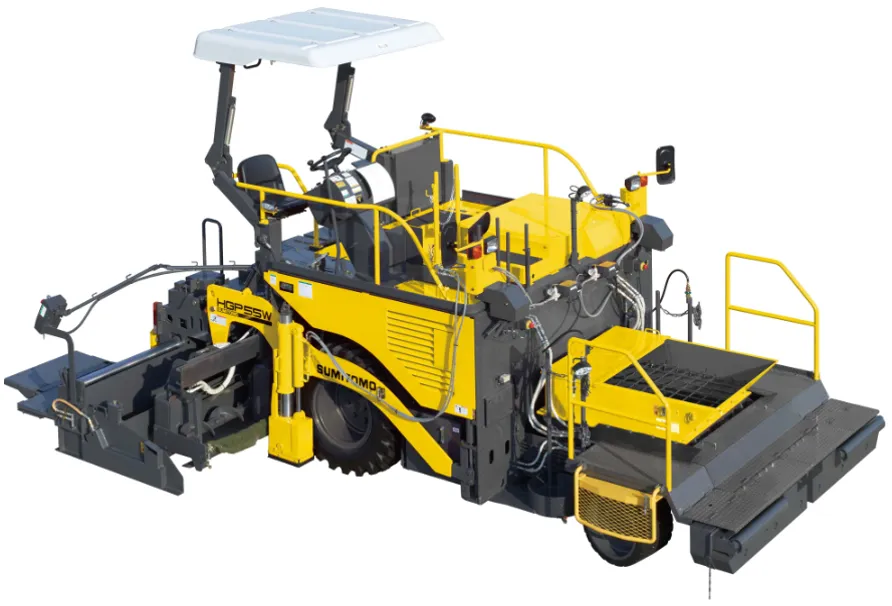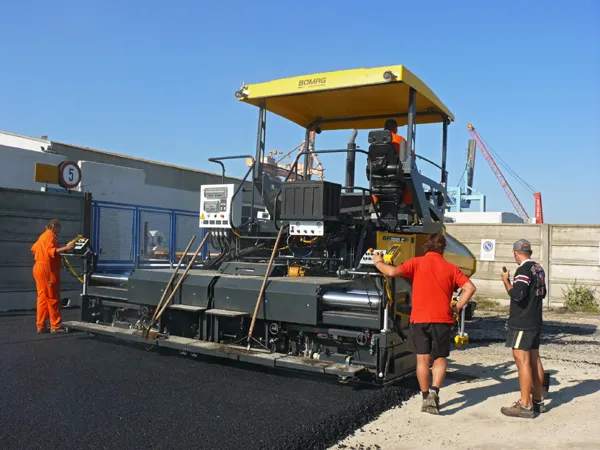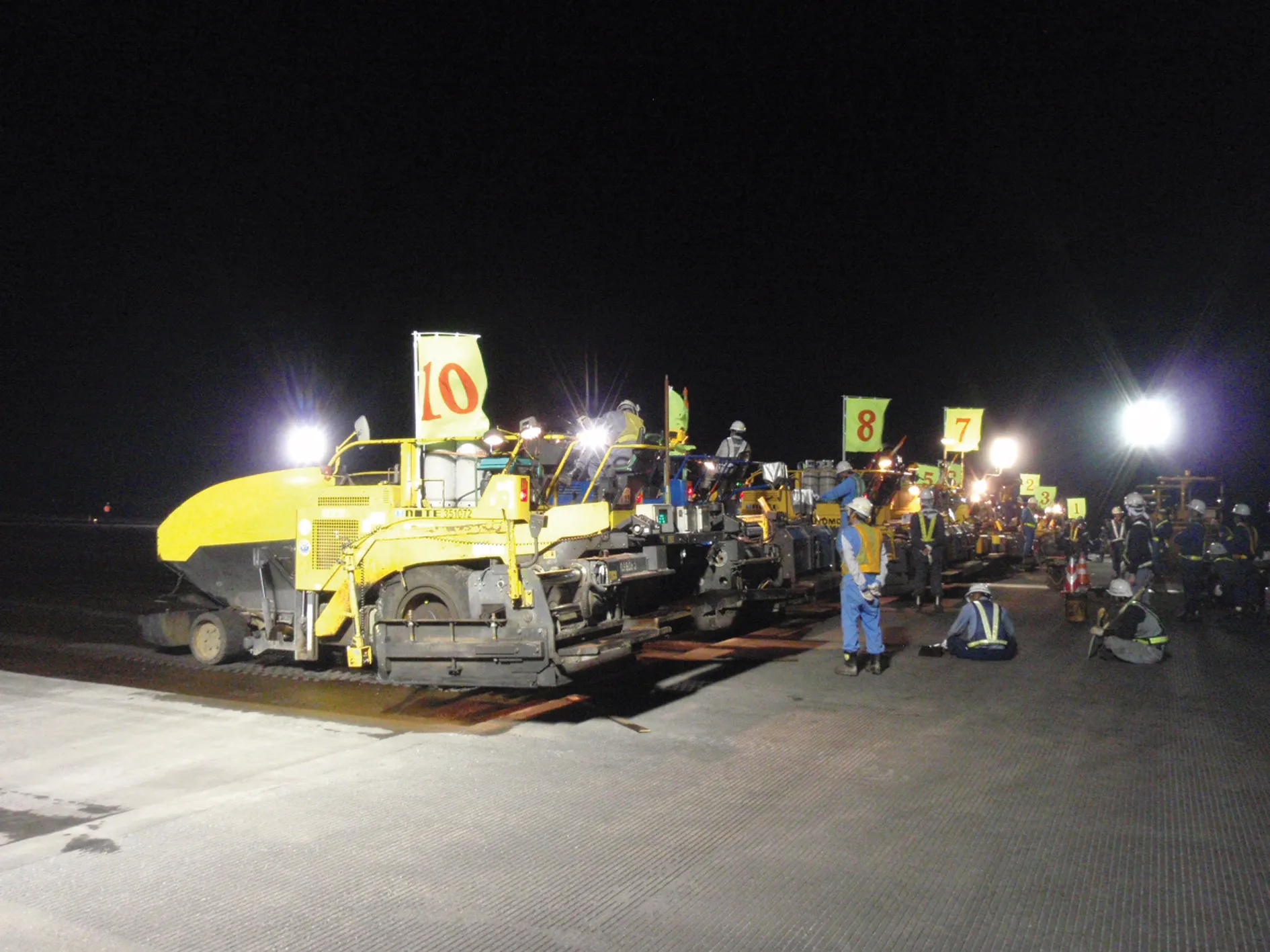
The HTP60W is a tack coat paver based on the standard HA60W model. The machine has the firm’s J- Screed with electric heating as standard and allowing hydraulic extension from 2.3-6m, while compaction is by tamper and vibration. The spraybars allow tack coats to be applied to the full paving width.
The HMP60 meanwhile is designed for dual layer paving and is based on the tracked variant of the standard HA60C-2. The dual screeds offer paving widths from 2.5-4.5m, with the first screed featuring compaction by tamper bar and the second offering compaction by a combination of vibration and tamper bar. The machine has a special feed hopper design, with a conveyor carrying material to an upper material storage area immediately in front of the crew deck and above the engine compartment. The design of the loading hopper allows the two surface material grades to be stored separately on the machine, prior to paving. Weighing in at 23.5tonnes, the dual layer machine offers an upper hopper capacity of 13tonnes and a lower hopper capacity of 2tonnes, with power from a 132kW diesel.
Another special machine developed by Sumitomo is the HGP55 Guss paver, based on a standard wheeled model. This suits paving on steel bridge decks and as a result, its screed uses vibration for compaction only, while its hydraulic extension is from 2.5-4.5m.









